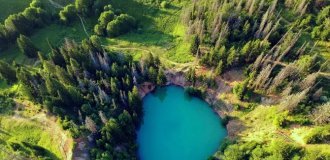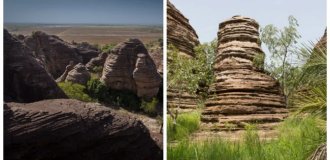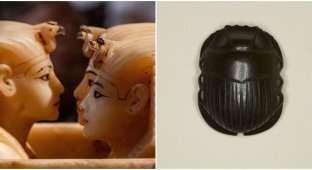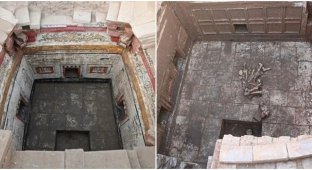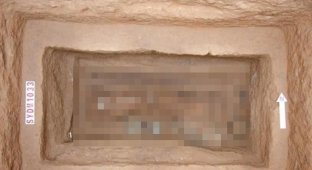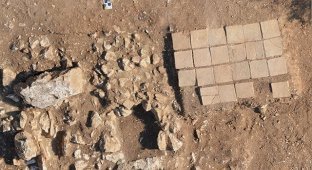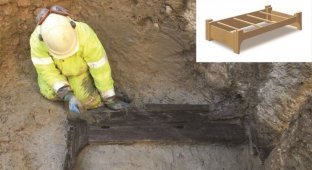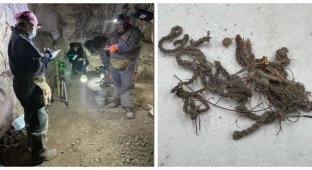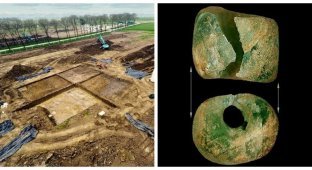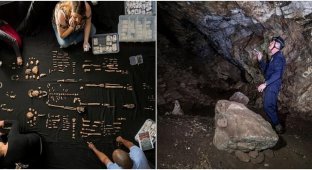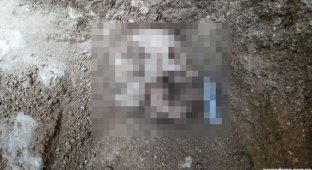30 curious ancient burials that have their own history (31 photos)
In ancient times, people were buried in a variety of ways: mummified and placed in sarcophagi, large-scale tombs were built, or simply buried in a swamp. In some cases, people were afraid that the dead would come to life or turn into vampires, so their bodies were beheaded or a stake driven through the heart. Let's learn about 30 interesting ancient burials that are known to the whole world. 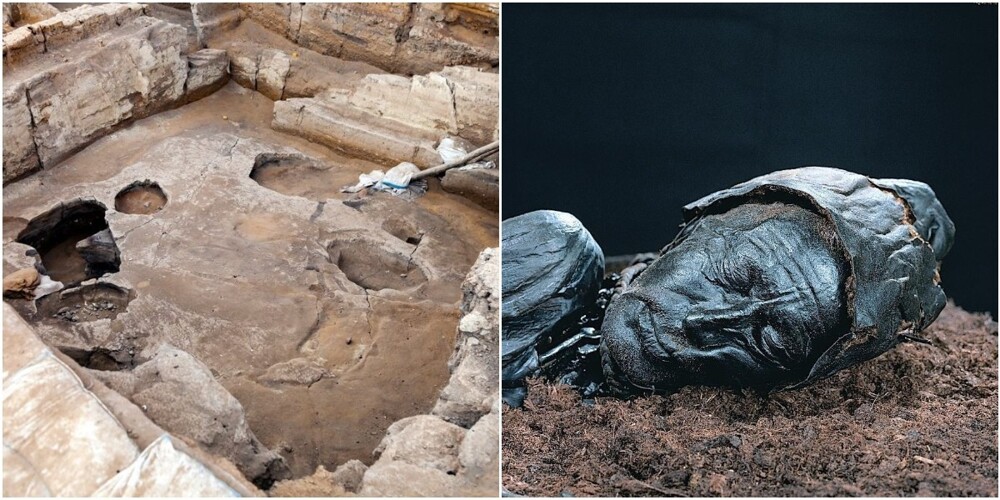
1. Headless skeletons in Poland 
In 2013, construction workers in the Polish city of Gliwice discovered a cemetery filled with headless skeletons: the skulls of the dead were placed between the knees. The burials date back to the 15th or 16th centuries. According to archaeologists, this method of burial could mean that the dead would not be able to rise from the dead and do evil. Another version is that perhaps criminals were buried this way.
2. Huaca Rajada, Peru 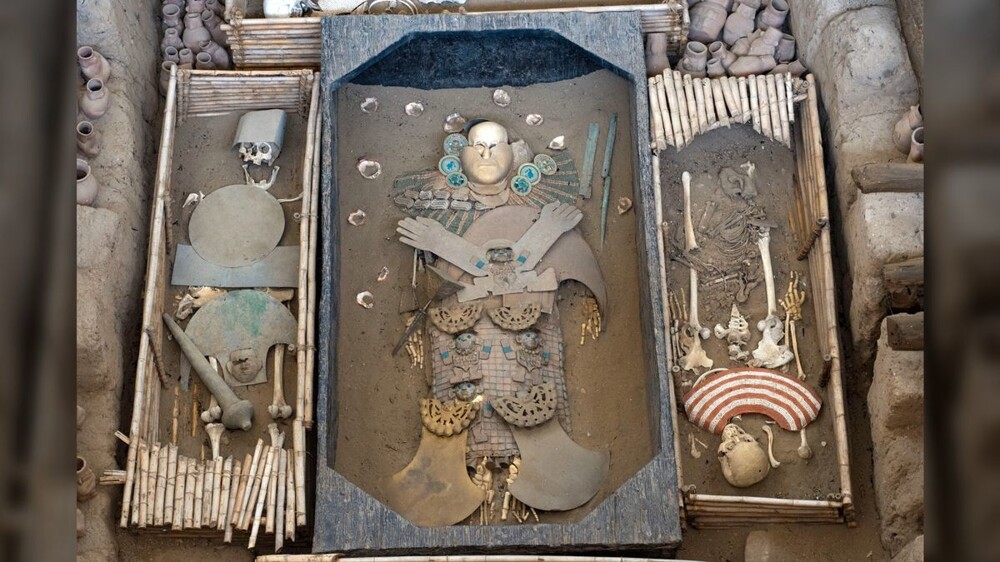
Huaca Rajada (also known as Sipan) in northern Peru contains a series of tombs that house the rulers of the Moche, a people who lived there from approximately 100 to 700 AD. Human sacrifices, masks, shields and clay vessels with offerings were found in the tombs. These burials were located under ancient pyramids 35 meters high.
3. Mausoleum of Augustus in Rome 
The Mausoleum of Augustus in Rome is a circular structure that housed the cremated remains of the Roman Emperor Augustus (reigned 30 BC to 14 AD) and members of his family. The diameter of the tomb was about 89 meters, and on the domed roof stood a statue of Augustus. Over time, this building began to be used for other purposes, and the cremated remains of the emperor were transported to another place.
4. Tutankhamun 
Tutankhamun, the pharaoh of ancient Egypt, died as a teenager and was buried in a luxurious tomb in the Valley of the Kings. His death mask, made of gold, is one of the most famous archaeological finds. Many artifacts were found in the tomb, including the golden throne of Tutankhamun, canopic jars (they were used to store the organs of a mummified person) and a dagger made of meteorite iron.
5. Tomb of the first emperor of China 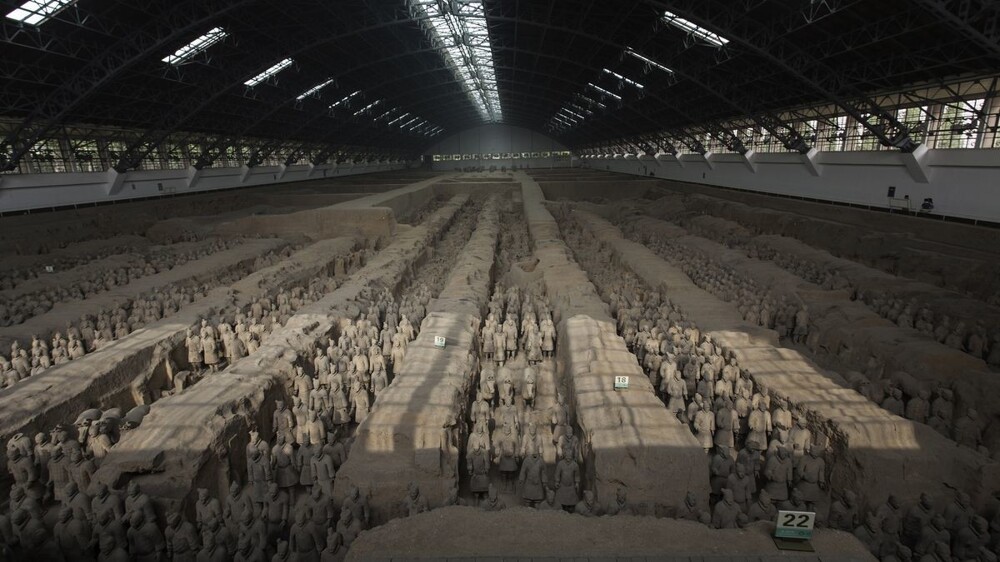
In 221 BC. e. Emperor Qin Shihuang united all of China for the first time in history. A large-scale tomb was built under the pyramid for the first emperor. Although archaeologists have not excavated the site where the emperor's body is located, they have found the "Terracotta Army" in the tomb, consisting of thousands of life-size statues of soldiers, horses and chariots.
6. Cheops 
By order of Pharaoh Cheops (reigned from 2551 to 2528 BC), the Great Pyramid was built in Giza - a monument of architectural art of Ancient Egypt and the only one of the “Seven Wonders of the World” that has survived to this day. It rises 146 meters and is the tallest pyramid ever built. Cheops himself was supposed to be buried inside the pyramid, but all that archaeologists found was part of a granite sarcophagus.
7. Mausoleum in Halicarnassus, Türkiye 
The Mausoleum at Halicarnassus is one of the Seven Wonders of the World. This was the tomb of the Carian ruler Mausolus (died 353 BC), built in the middle of the 4th century BC. e. Neither the body of Mausolus nor the building itself have been preserved. The height of the tomb was approximately 43 meters, and at the top there were 63 columns.
8. Sutton Hoo 
Sutton Hoo is a burial mound necropolis in the English county of Suffolk. It houses the remains of a 27-meter-long ship with a burial chamber containing 263 artifacts. The most famous artifact is an iron helmet with animal motifs carved into it. It is unknown who was buried there, but according to the main version of archaeologists, it was Raedwald, an Anglo-Saxon king of the early 7th century AD. e.
9. Pharaoh Psusennes I 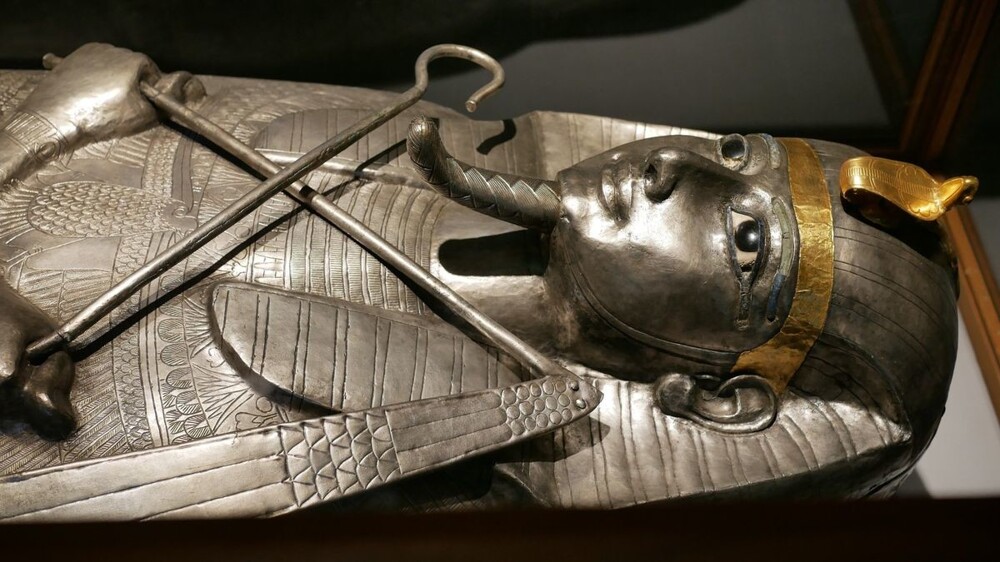
Psusennes I ruled Egypt around 1039-993 BC. e. In 1940, his tomb was discovered in the ancient city of Tanis. He was buried in a silver coffin, which is why some modern authors call Psusennes I the “silver pharaoh.”
10. Tomb at Amphipolis 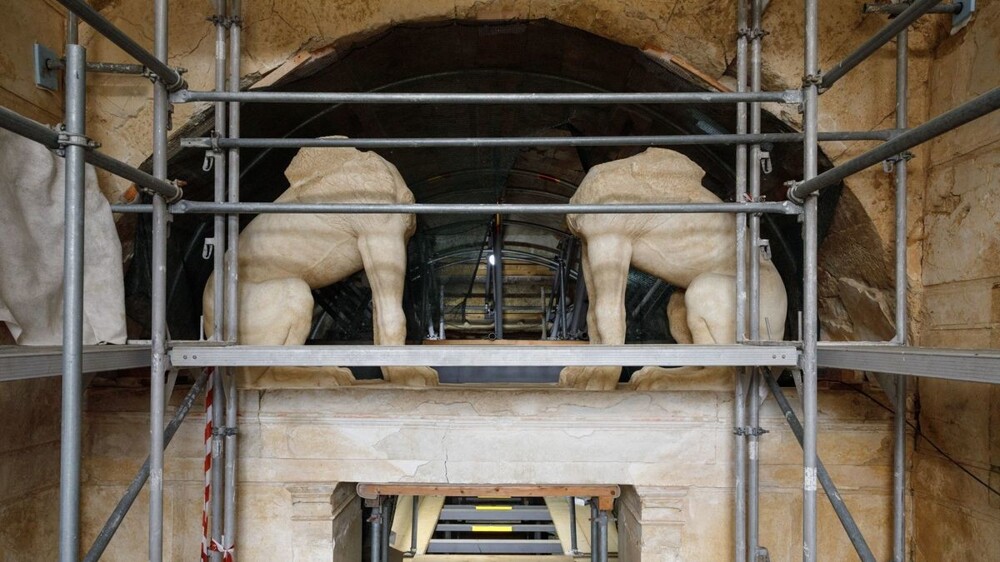
The tomb at Amphipolis is the largest known tomb in Greece and dates from 325–300 BC. BC e. It has sphinxes guarding the entrance, female statues and mosaics depicting scenes from Greek mythology. The remains of at least five people were found inside, but it is unknown who exactly they belong to.
11. Ötzi 
In 1991, the frozen and well-preserved remains of a man nicknamed "Ötzi" by researchers were found in the Ötztal Alps in Tyrol, Austria. Research has shown that his height was about 1.6 meters, and his age at the time of death was about 45 years. Archaeologists believe that Ötzi died after being hit by an arrow.
12. Royal Cemetery of Ur 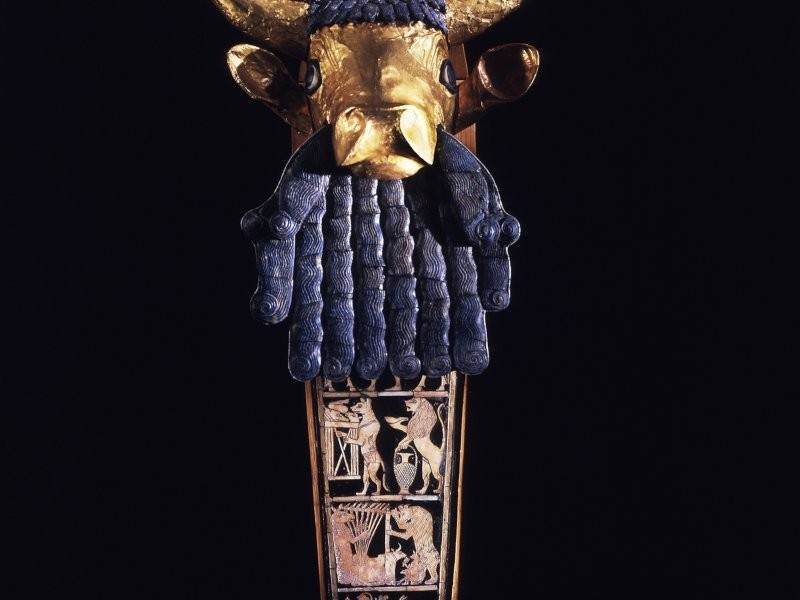
The Royal Cemetery of Ur in Iraq, which is approximately 4,500 years old, includes about 16 tombs belonging to royalty or other members of the elite. Headdresses, necklaces, earrings, and cylinder seals were found in the tombs. There are also a large number of people buried near the royal burials with simpler items - it is believed that these may have been human sacrifices for the royals.
13. Catal Huyuk, Türkiye 
Çatalhöyük is one of the oldest known settlements on the planet, which was located in the province of Konya, Turkey 9,000 years ago. People here were buried mainly under the floors of houses, and in some houses there were up to 30 burials. A 2011 study found that people buried under the same house were often not biologically related.
14. Greek sarcophagus 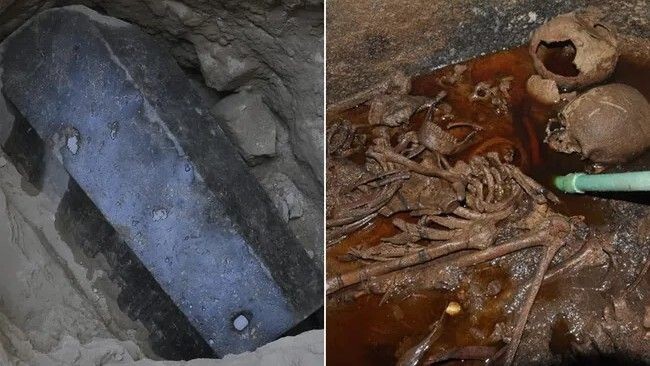
In 2018, a group of archaeologists found a black granite sarcophagus in Alexandria (Greece). It attracted a lot of interest, and some even said that if it were opened, it would lead to the end of the world. But after the autopsy, nothing happened. Scientists found inside the remains of three people who were never identified, and three engravings on gold sheets. The sarcophagus itself appeared after the conquest of these places by Alexander the Great in 332 BC.
15. Tomb of St. Peter 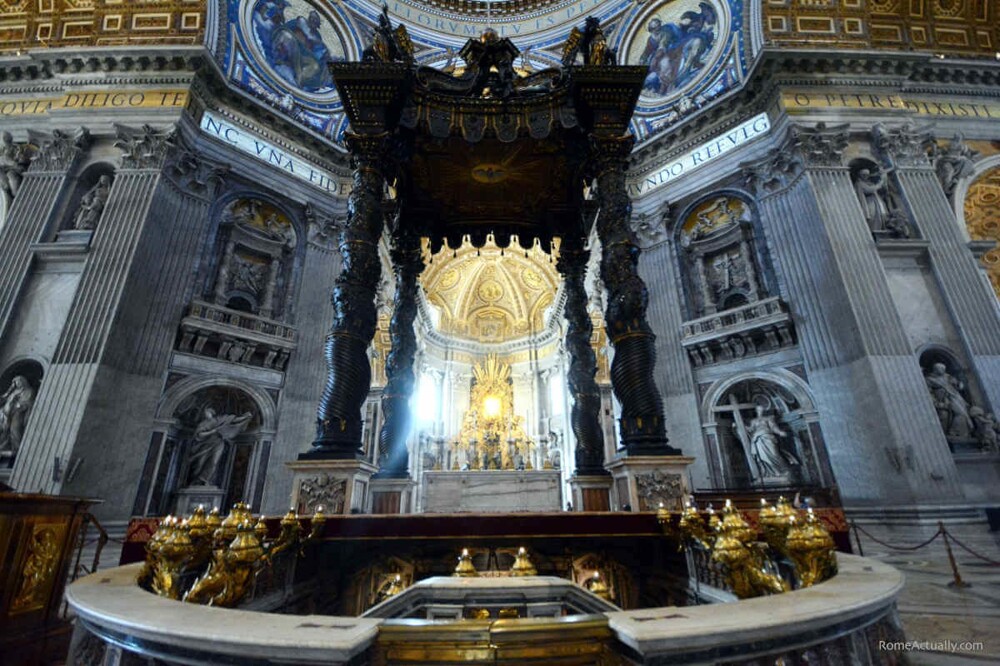
The Tomb of St. Peter is located under the altar of St. Peter's Basilica in the Vatican - not far from the place where the saint was crucified in the 1st century AD. e. Inside the tomb there are many graves with human remains: one of the skeletons, according to some researchers, could belong to St. Peter himself.
16. Tomb of Seuthes III 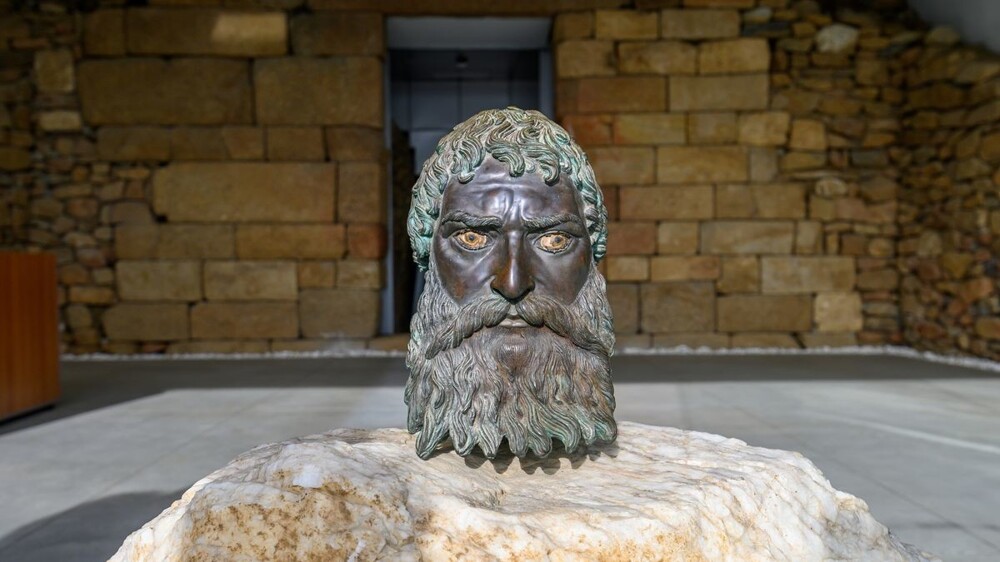
Sevt III - king of the Odrysian kingdom (Thrace), who ruled from 331 to 300 BC. e. He was buried on the territory of modern central Bulgaria. Many valuable funerary items were found in his tomb, including a gold crown, a gold cup, a weapon, a shield, a bronze helmet and a bronze head, which may represent the king himself.
17. Castel Sant'Angelo 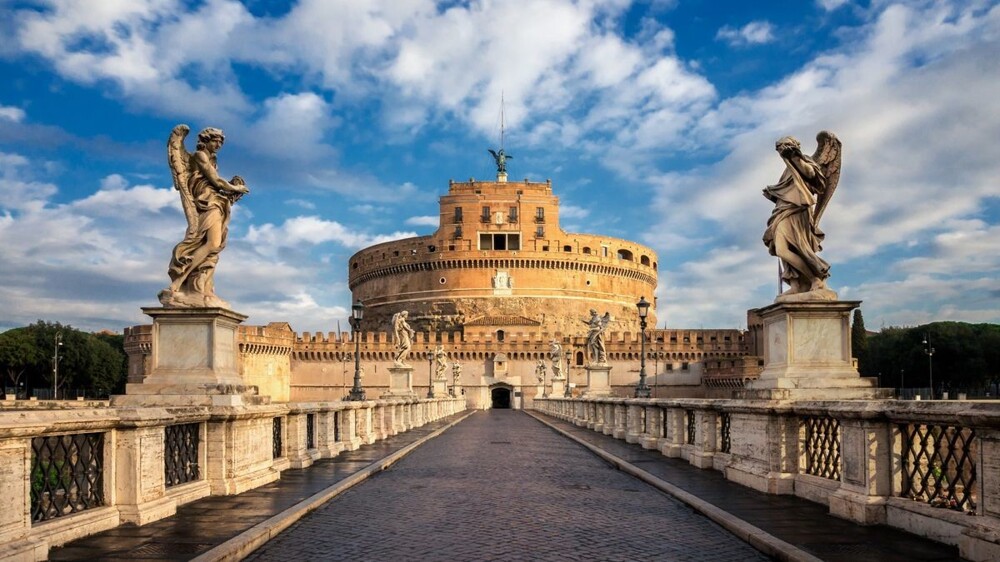
Castel Sant'Angelo in Rome is a mausoleum built by the Roman Emperor Hadrian (reigned 117-138 AD). It contained urns with the cremated remains of the emperor himself, his wife and several successors. The 50-meter-tall building was converted into a fortress, which was sometimes used by the popes. Today it houses a museum.
18. Mausoleum of Theodoric 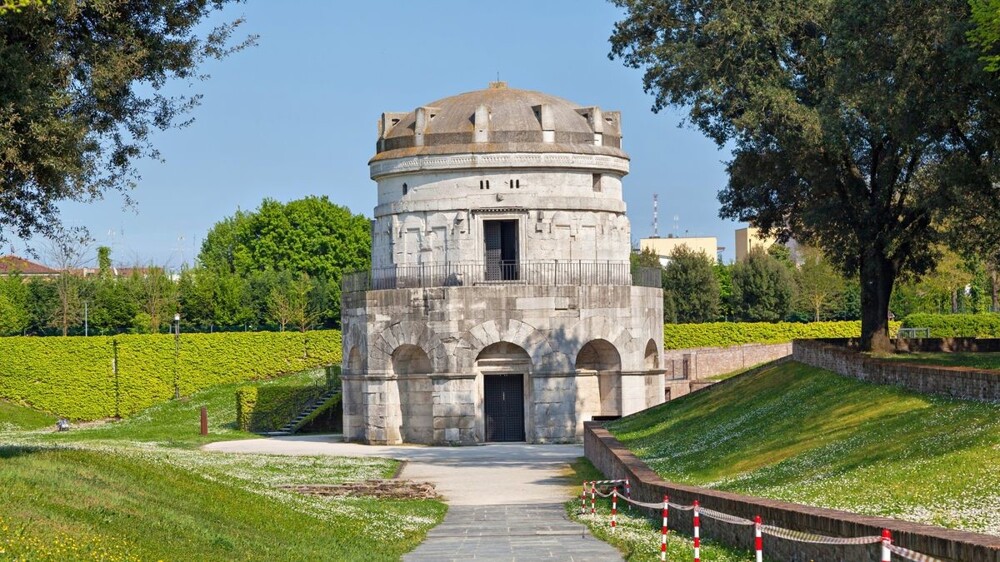
The mausoleum of Theodoric the Great, an ancient Germanic king, is located in Ravenna, Italy. The two-story structure was built from at least 230 tons of stone and topped with a domed roof. After the Byzantine Empire defeated the Ostrogoths in 540, Theodoric's remains were removed and the mausoleum was converted into a church.
19. Pyramid of Djoser 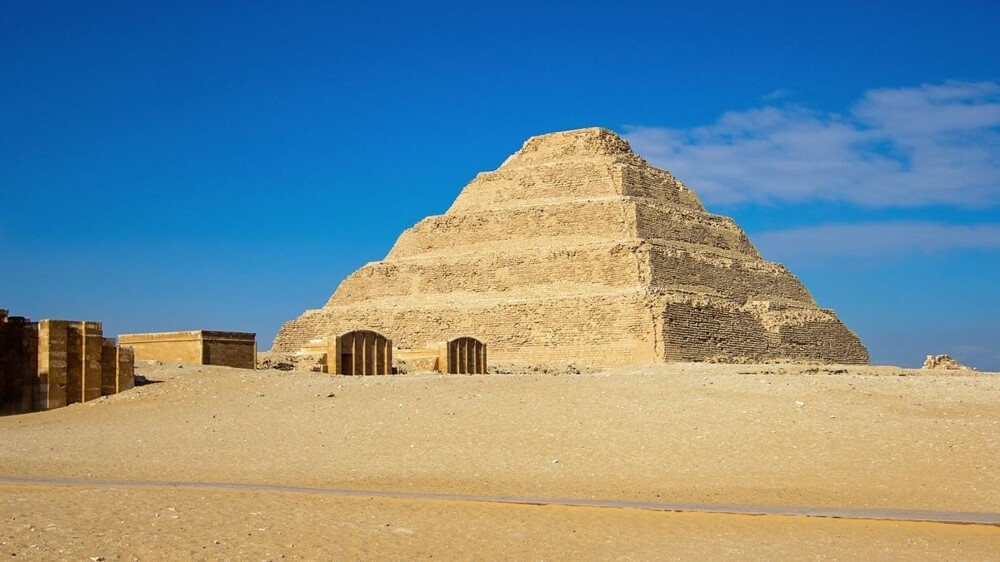
Djoser was a pharaoh of Egypt who reigned about 4,700 years ago. He was buried inside this pyramid in the Egyptian village of Saqqara. This was the first pyramid built in Egypt. The tunnels under the pyramid form a labyrinth about 5.5 kilometers long, inside which is the burial chamber of Djoser. The remains of the pharaoh himself have long disappeared, but archaeologists have found 32 fragments of the king’s granite sarcophagus.
20. Tomb of Chochquitam in Guatemala 
In January 2024, archaeologists discovered the 1,700-year-old tomb of a Mayan king in Chochquitam, Guatemala. It contained a jade mask, mollusk shells, as well as drawings and writings engraved on the king's thigh bones.
21. Chowchilla Cemetery 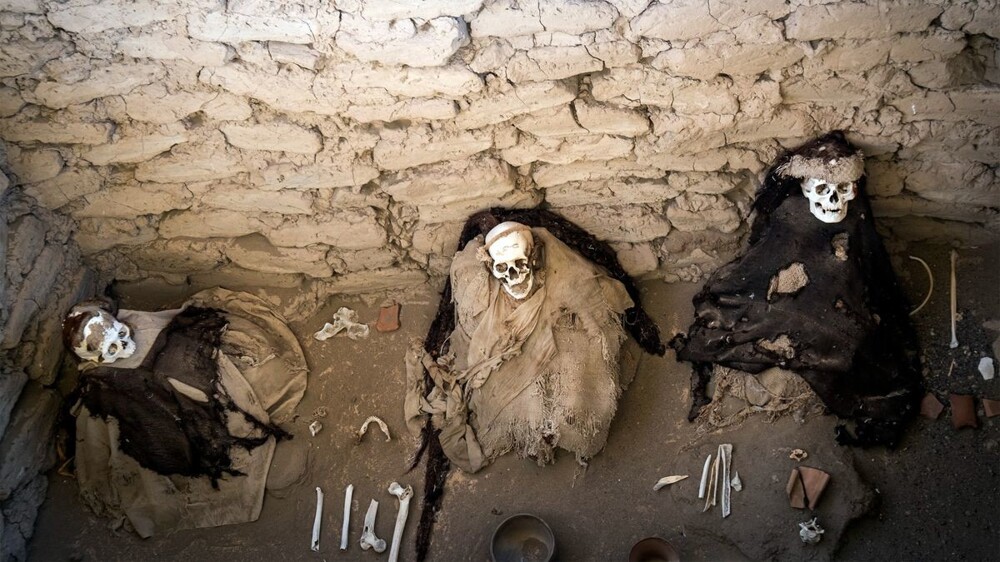
The ancient cemetery of Chauchilla is the only archaeological necropolis in Peru. The people buried there belong to the Nazca culture, which flourished in the area from 100 to 800 AD. Thanks to the arid climate, the found burials are very well preserved.
22. Cahokia, USA 
Cahokia or Cahokia is a group of 109 North American Indian mounds located near the city of Collinsville in Illinois, USA. One of the mounds, Mound 72, contains more than 200 burials, including human sacrifices.
23. Pyramid of Queen Amanishaketa 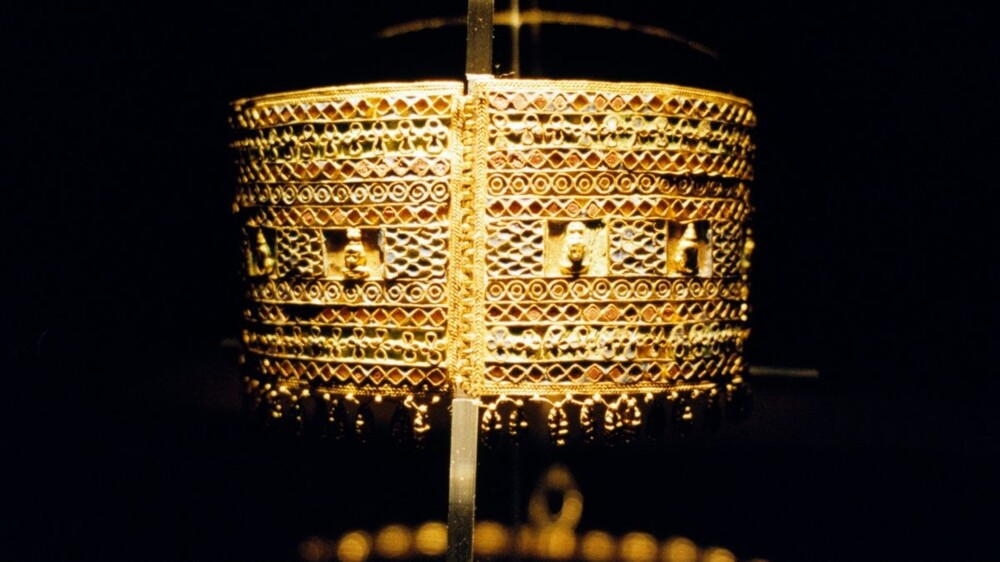
Queen Amanishakete was the ruler of the kingdom of Kush (in what is now southern Egypt and Sudan) more than 2,000 years ago. She was buried in a pyramid with gold decorations: the pyramid itself was destroyed in the 19th century, but some of the decorations were preserved.
24. Screaming mummy. Prince Pentaur 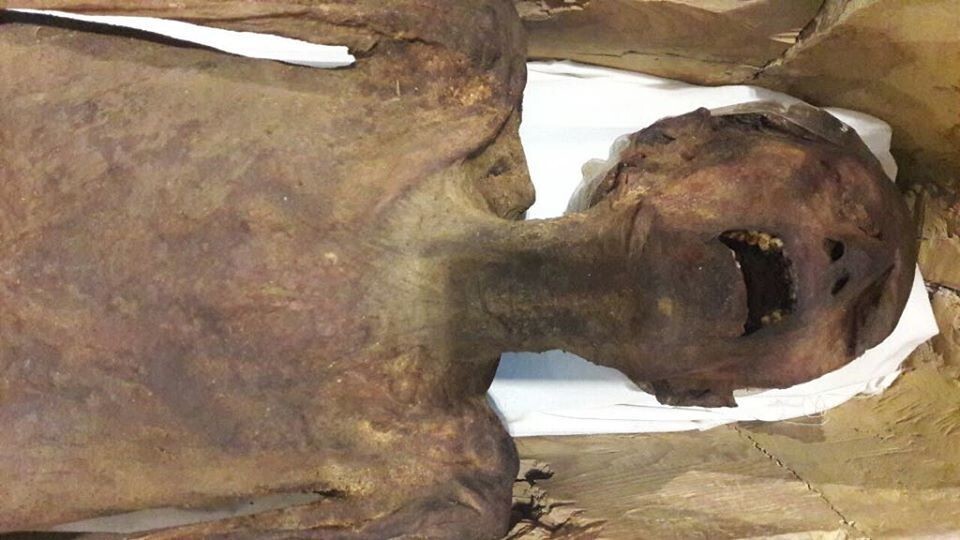
Prince Pentaur, son of Ramses III (reigned 1185–1153 BC), was involved in a plot to kill his father. In addition to him, military and civil officials, women from the harem, and even Ramses’ wife took part in the conspiracy. After his father's death, Pentaur committed suicide. Pentaur's mummy, commonly known as the "screaming mummy", was not properly mummified: there wasn't even any embalming fluid inside.
25. Church of the Holy Sepulcher in Jerusalem 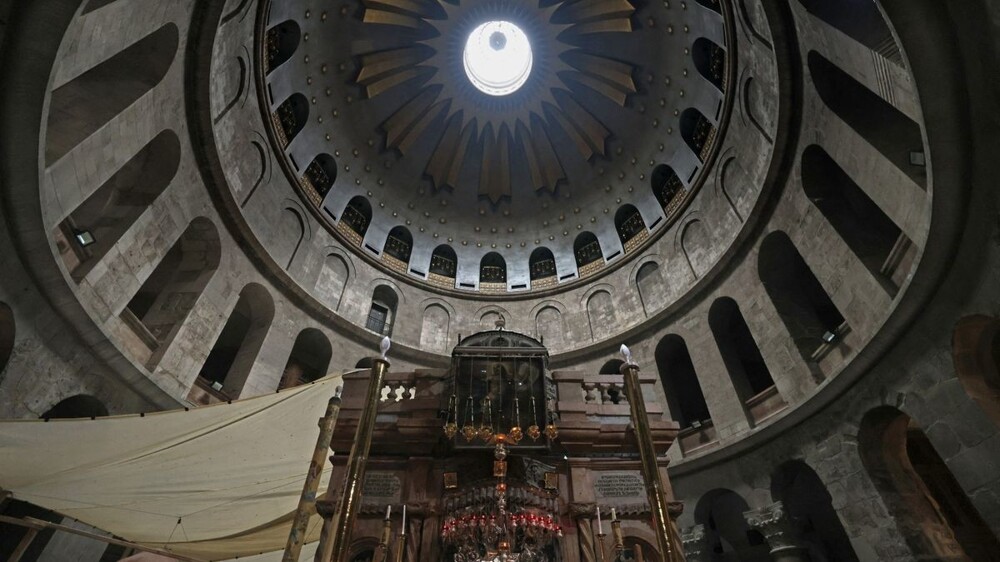
It is believed that the Church of the Holy Sepulcher in Jerusalem stands on the spot where Jesus Christ was crucified, buried, and then resurrected. In 2016, the tomb was opened to carry out conservation work.
26. Burial of a “vampire” in Bulgaria 
In 2014, during excavations in the Bulgarian city of Perperikon, a grave was found with the skeleton of a man who had been pierced in the heart area with a metal stake. The burial dates back to the beginning of the 13th century. A stake placed in the heart supposedly protected the deceased from becoming a vampire.
27. Remains of a woman in Greece 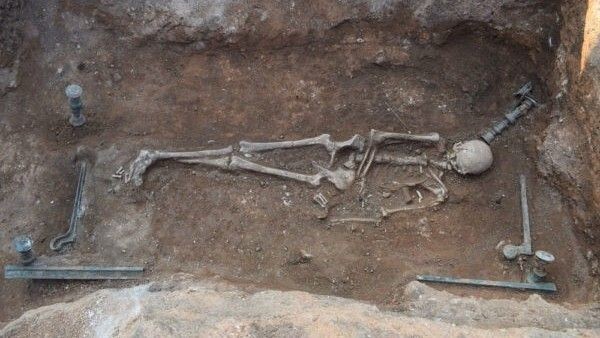
Greek archaeologists recently discovered the remains of a woman buried on a bronze bed near the city of Kozani. On parts of the bed there are images of mermaids and a bird holding a snake in its mouth - a symbol of the Greek god Apollo. On the head of the deceased there were golden laurel leaves - probably the remains of a wreath.
28. Silla burials 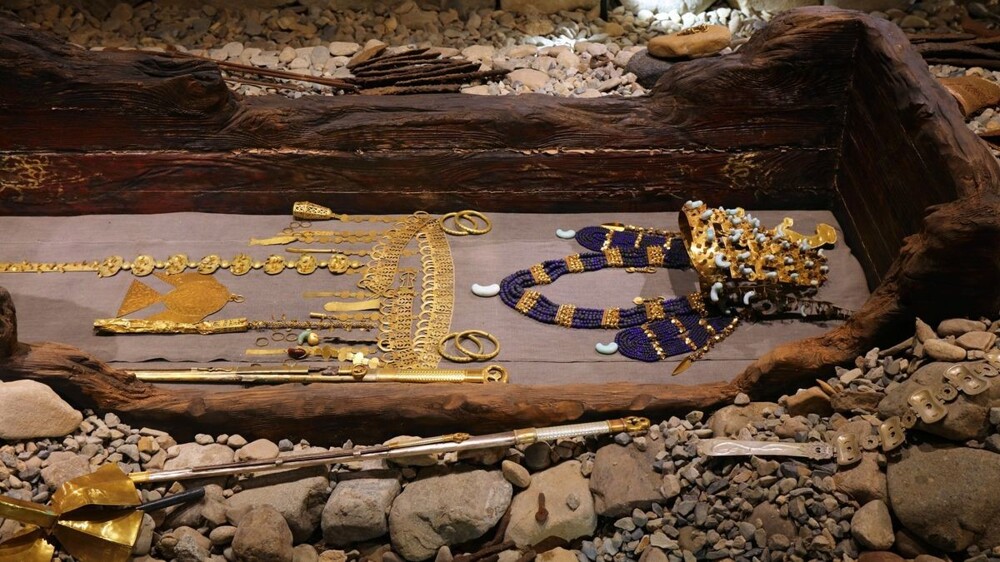
Silla is one of the Three Kingdoms of Korea, which flourished from approximately 57 to 935 AD. Local rulers and royalty were buried in luxurious royal tombs. Various treasures were found in them: golden crowns, golden tiaras, earrings, necklaces, pendants, belts, rings, swords, golden vessels and hats made of gold and silver.
29. Treasury of Atreus in Greece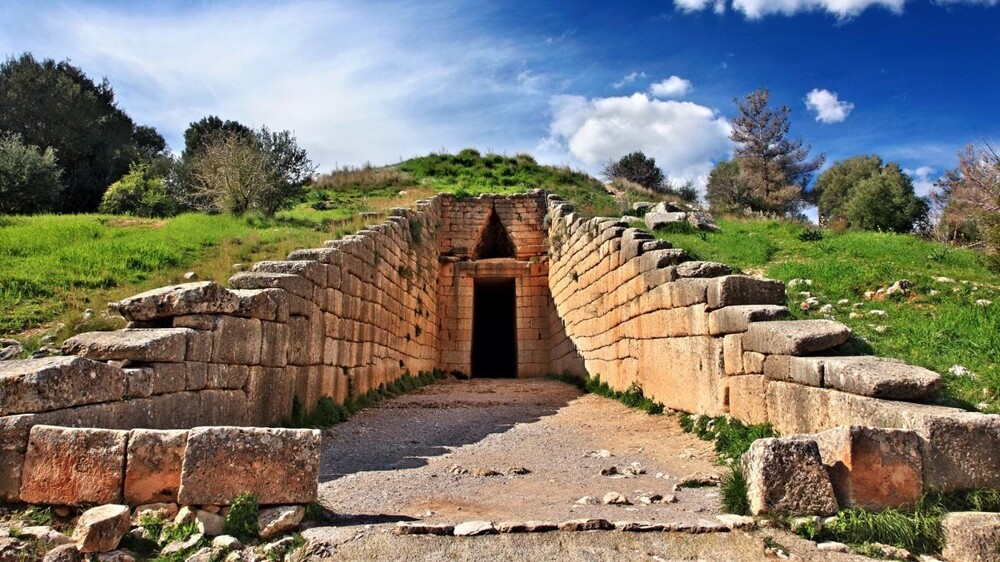
The Treasury of Atreus (or Tomb of Agamemnon) is a beehive-type tomb in Greece that is approximately 3,300 years old. Atreus and Agamemnon are kings from ancient Greek legends, and scientists still have not determined which of them is buried in this place. It is known that the tomb belongs to the Mycenaean civilization: similar tombs were built in other parts of Greece.
30. The Man from Tollund 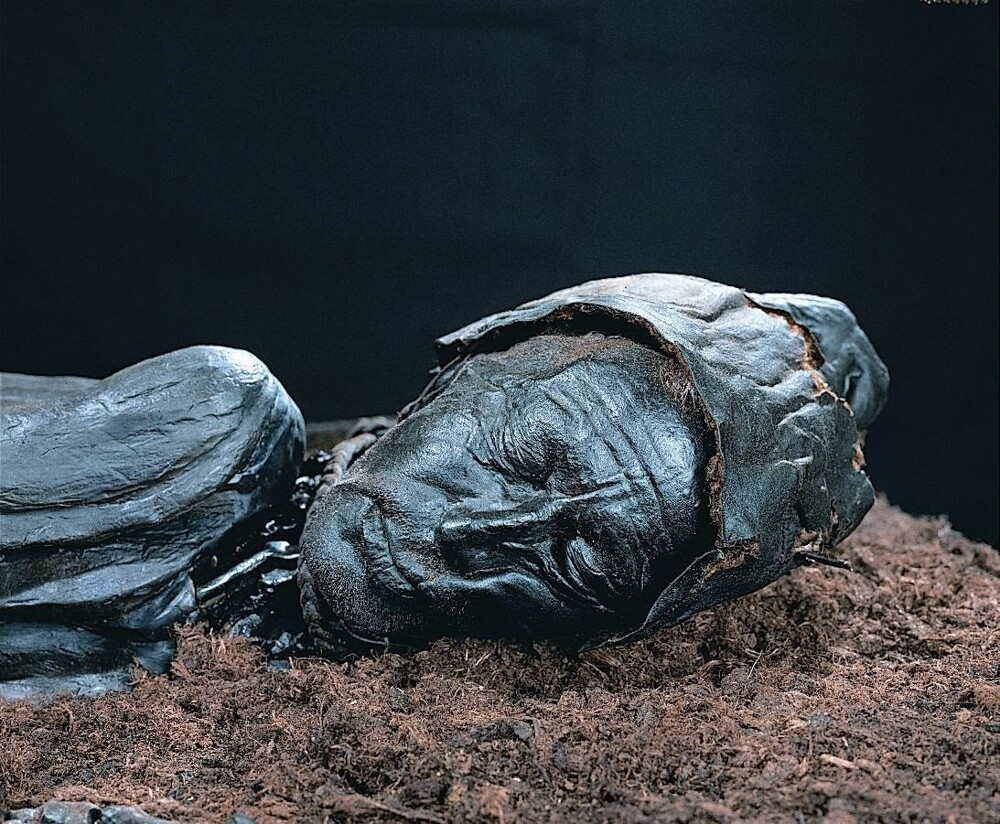
The "Man of Tollund", who was found in a bog in Denmark in 1950, lived about 4,400 years ago and died of suffocation with a rope. His body was perfectly preserved in the swamp: therefore, archaeologists were able to establish that at the time of his death he was 30-40 years old, and his last meal consisted of porridge and fish.



